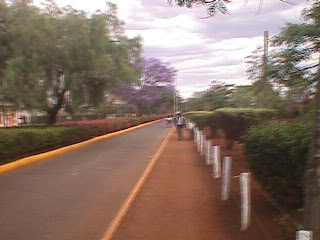Points to Check before buying a plot.
Points to Check before buying a plot.
1. Encumbrances. Check with the Ministry of Lands if there are any Caveats put on the plot.
2. Ascertain ownership.
Check with the Ministry of Lands who is the registered owner of the land. Its also prudent to check with the neighbors to get the physical appearance and current contacts of the owner.
In Kenya, there has been incidences where people steal the identity of the real land owner and sell to unsuspecting customers. By confirming the owner from the neighbors, this will reduce such a risk.
3. Ability to appreciate in Value.
Most land appreciates in value. The prospect of new infrastructure will play a big role in increasing the value of the land.
Currently, land in Juja, Thika, Kenya is appreciating very fast due to the construction of Thika road into a several-lane highway and construction of a by-pass on the behind side of Juja. There is also the fact that Wilson airport is planning to relocate to this area.
Land in Kitengela, Athi River and Syokimau is also appreciating very fast with the completion of Mombasa road Highway.
4. Check with the Meteorological department.
Check to see if the land sits on a wetland. Some land can be actually on a dried up seasonal river , lake or swamp. If you are not careful, once the rains start, the whole plot gets submerged or the building gets swept by the river floods.
Areas such as Runda and Membley estate, Thika road are prone to such plots. With a good structural design, the building can be raised with collumns to a level above the flood water level.
5. Check the soil type.
If you are planning to build a house, foundations with black cotton soil are more expensive since all the soil has to be excavated from the site. This is due to the fact that black cotton soil expands when it rains hence pushing the floor slab and foundation up. It then shrinks when it dries hence pulling the floor slab down.This expansion and contraction results in structural cracks.
If the black cotton soil is more than 1.5 meters deep, it becomes too expensive to excavate it. A good solution is to use the suspended foundation where collumns are sunk and footed at stable ground. The collumns are raised till just above ground level then the ground floor suspended on the columns. This reduces the excavation to only at the collumns.
Red soil is more stable so foundations can be laid on stable excavated ground 1.5 meters deep.
Areas with volcanic soils such as Nakuru will require a different type of foundation called a raft foundation for high-rise construction. Once the soil is excavated, a concrete slab is laid on the bottom and collumns emanate from there. This creates a very stable foundation to support the building.
Frank Gichuhi
www.prismafrica.com
Labels: athi river, juja, kenya, land, membley, nakuru, red soil, runda, syokimau, thika


